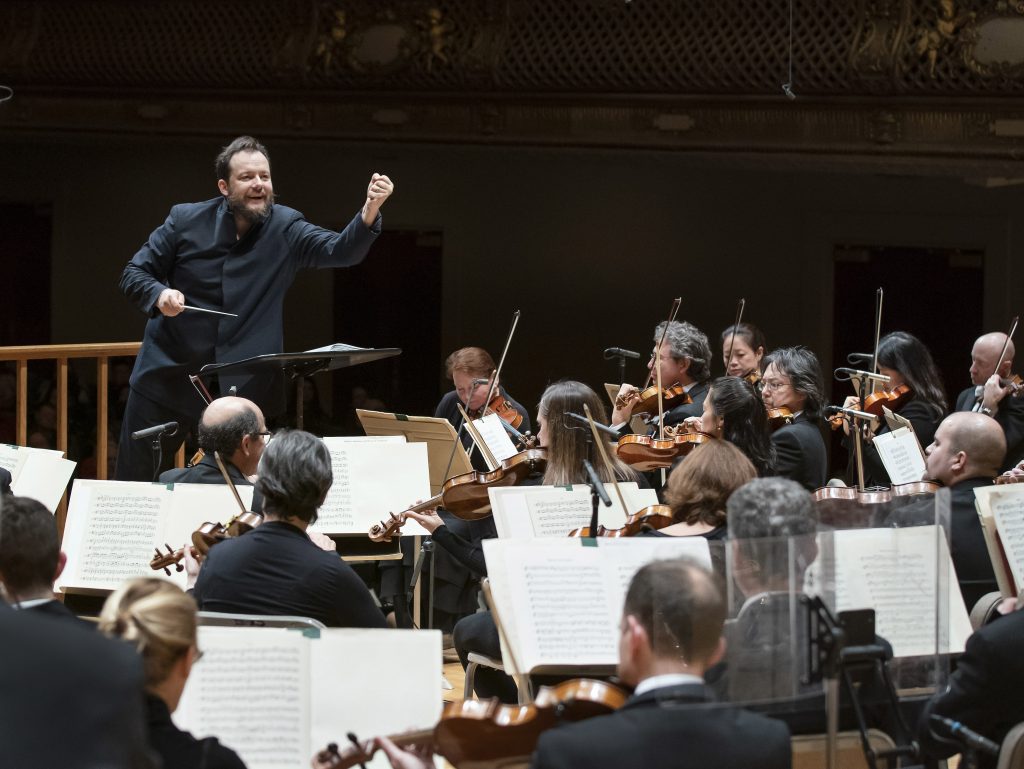Boston Symphony’s weighty Shostakovich, detailed Dvořák outshine a mixed “Medea”

In the summer of 1960, Dmitri Shostakovich suffered an emotional breakdown — brought on, according to friends, by his sudden decision to join the Communist Party. (Insert joke here.) Turning inward, the composer penned one of his greatest compositions — the String Quartet No. 8, which his compatriot Rudolf Barshai later expanded for string orchestra as the Chamber Symphony.
Dedicated to the victims of fascism and war, the Chamber Symphony bears the sound of heightened anxiety. Was the composer secretly attempting to express the brutalities of the Soviet system? As with many of Shostakovich’s works, it is left to the listener to decide.
Andris Nelsons views the Chamber Symphony as a document of profound tragedy. Leading the Boston Symphony Orchestra in its first performance of the work at Symphony Hall on Thursday night, he communicated all of its crushing human despair.
On the surface, the music is a hodgepodge, mixing themes from the Fifth and Tenth Symphonies as well as the First Cello Concerto. A motive drawn from the initials and last letters of the composer’s name — DSCH (D, E-flat, C, and B) permeates almost every theme.
Yet its five movements, which are played together without pause, involve a poignant journey from mystery, anguish, anger and back again. Barshai’s orchestration — which the composer himself approved —gives the original quartet symphonic scale where the lines mix, transform into dark colors and fade into breathy pianissimos.
In Thursday’s performance, Nelson combined the motives that open the work into a dense whole, the BSO strings emitting an almost inviting warmth before turning icy. The musicians carried this tension even in the softest phrases, offset only by Tamara Smirnova’s silvery violin solo at movement’s close.
Nelsons and the orchestra dug in for an agitated second-movement march, whose dark humor leeched into a wry and more delicate Scherzo. Each movement required its own kind of intensity that the BSO strings were able to summon and maintain. In brief but memorable solo passages, cellist Blaise Déjardin offered a bright-toned counterbalance.
In the latter movements, Nelsons emphasized the stabbing chords before the music faded into the slow finale, where the emotions explored in the music were left bare and, ultimately, unresolved.
Samuel Barber’s Medea’s Meditation and Dance of Vengeance, which opened the concert, made less of an impression.
Drawn from the music for the ballet Cave of the Heart, this short, bristly work from 1956 shows the romantic Barber exploring a variety of modernist techniques. Some passages wander perilously close to atonality, harmonies glitter with dissonance, and other moments feature sparse, pointillistic gestures. All convey the horrors of the classic Euripides story in which a woman, driven mad by betrayal, murders her husband and children.
Nelsons’s broad reading yielded mixed results. Attuned to Barber’s lyricism, the conductor coaxed lush melodies from flute, clarinet, and strings. He also found a dramatic arc in the slow sections of the score.
The brass, for their part, brought powerful resonance to the return of the opening theme. But the concluding dance — the story’s bloody end — plodded rather than coursed, and felt more like a temper tantrum than a murderous rage.
Nelsons’s interpretation of Dvořák’s Symphony No. 9, From the New World, which came after intermission,was more convincing.
Pieced together, in part, from excerpts from an abandoned opera based upon Longfellow’s Song of Hiawatha, this popular symphony is a truly cinematic experience, with movements conveying Hiawatha’s return from the hunt and vengeful pursuit of his menacing adversary, Pau-Puk-Keewis.
Nelsons has a keen eye for Dvořák’s plush textures and soaring melodies, and he mined the music of its urgency. Tempos tended to be brisk, and the first theme churned intently in the French horns and woodwinds.
Throughout, the conductor kept an eye towards every detail, and he shaped the ensuing themes in song-like arcs. The soloists were superb, with Robert Sheena’s warm English horn melody in the Largo providing the highlight. Nelsons brought apt fire to the Scherzo, and the trios that are central to the movement unfolded with lilting grace.
In the finale, Nelsons worked like a sculptor, emphasizing the contrasts between the bold brass calls, trickling woodwind and string figures, and smooth clarinet solo. Drawing out the gentle surges and decrescendos, he delivered a resolute coda fit for any epic musical journey.
The program will be repeated 1:30 p.m. Friday and 8 p.m. Saturday at Symphony Hall. bso.org; 888-266-1200
Posted in Performances



